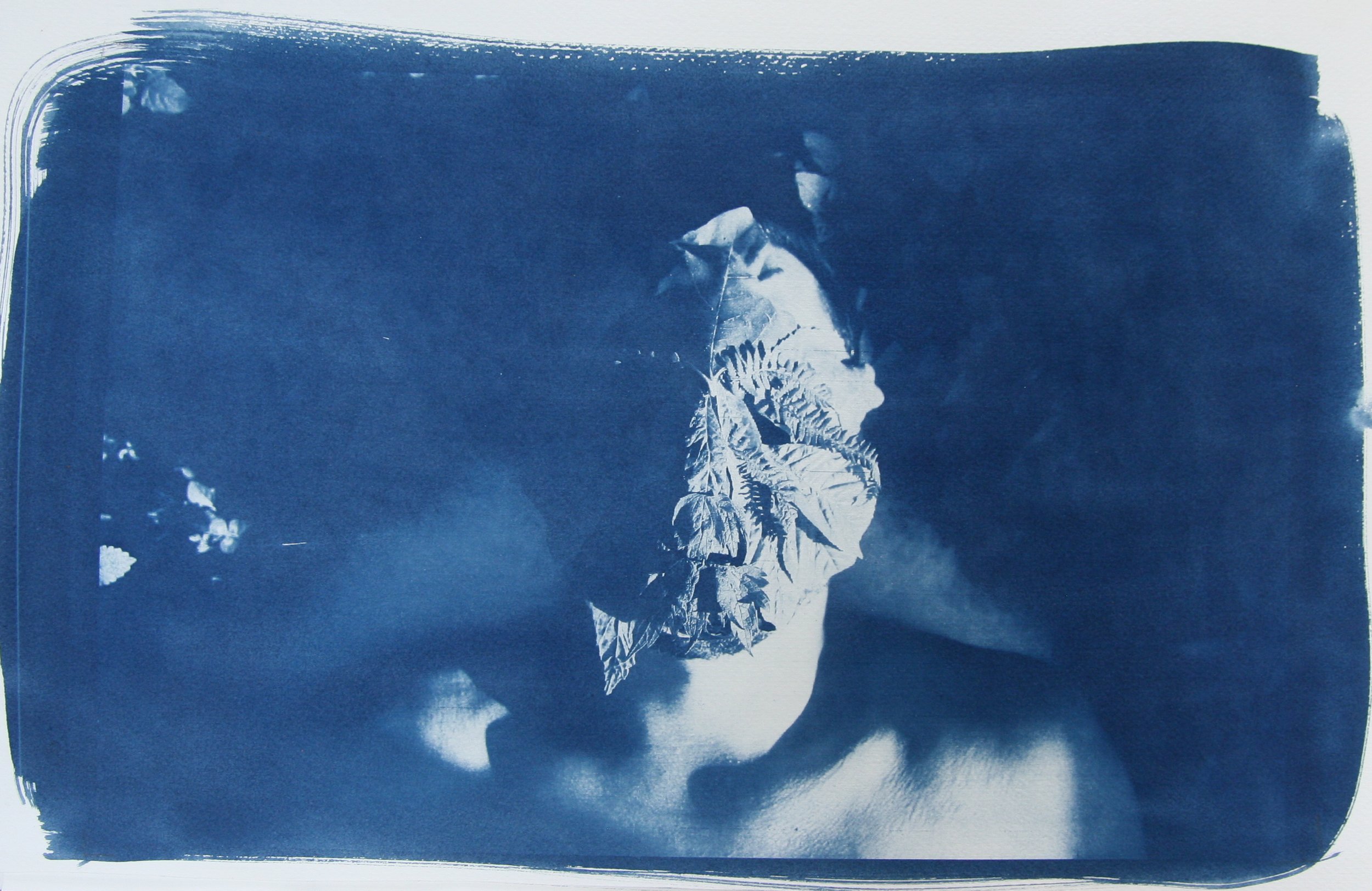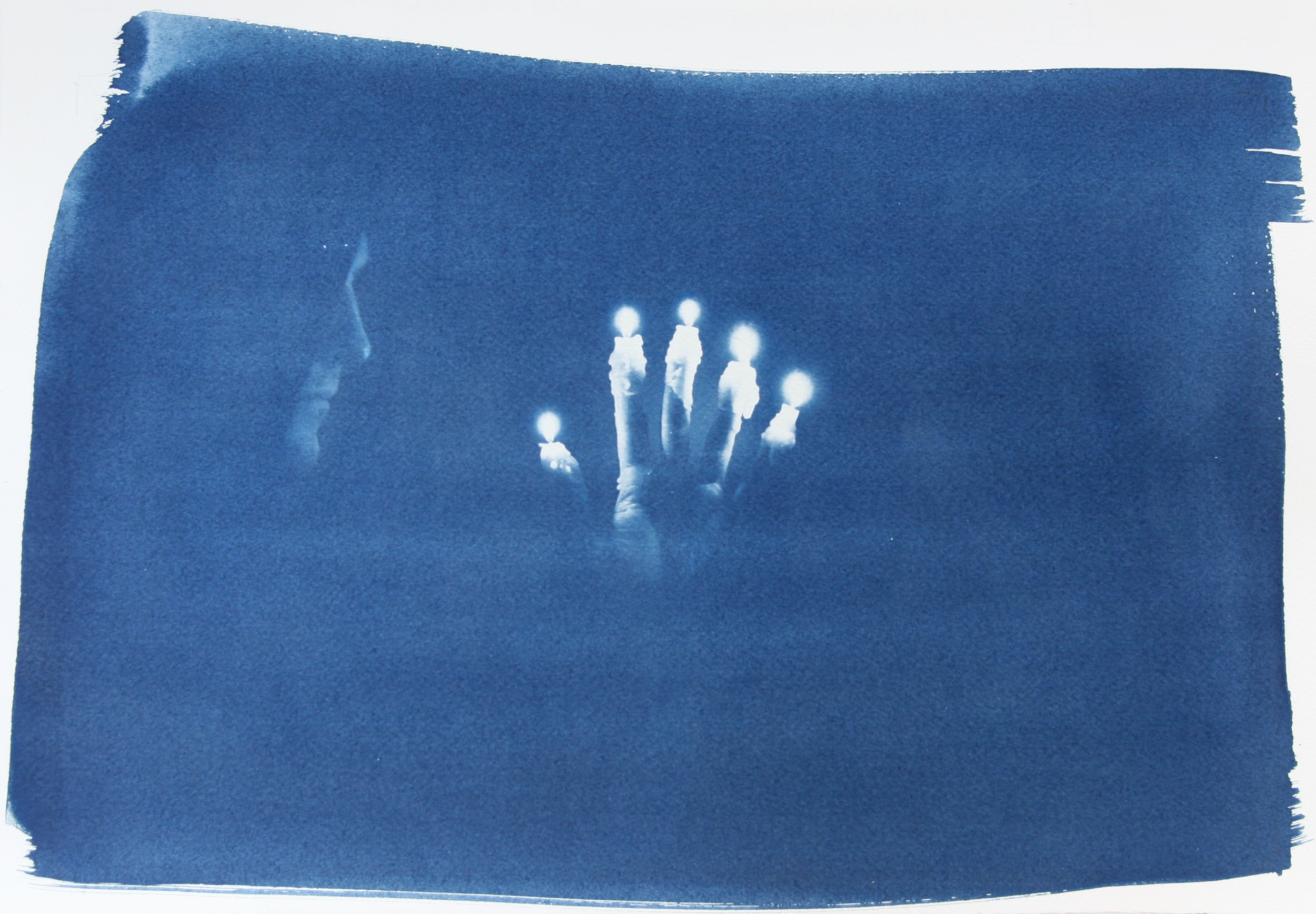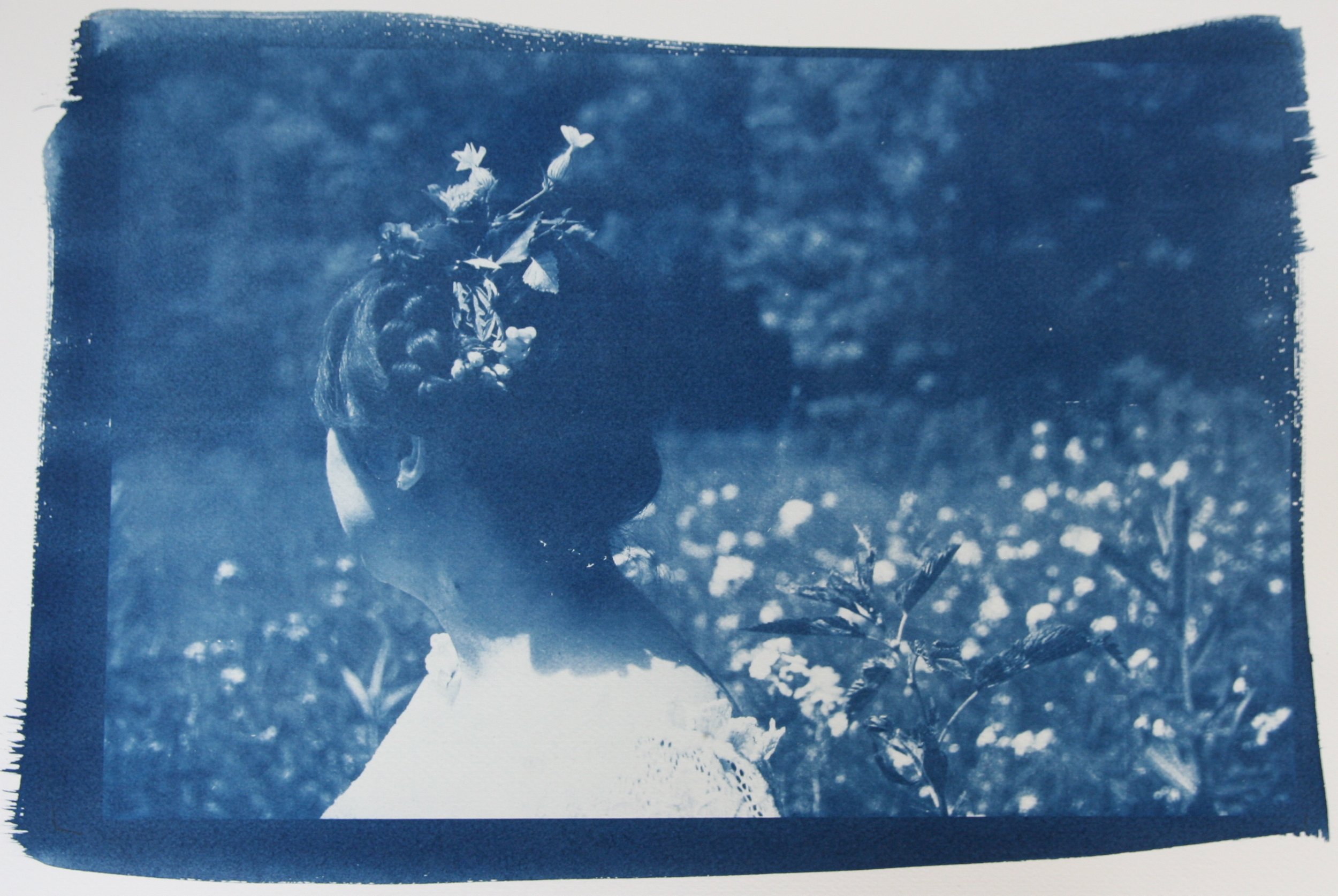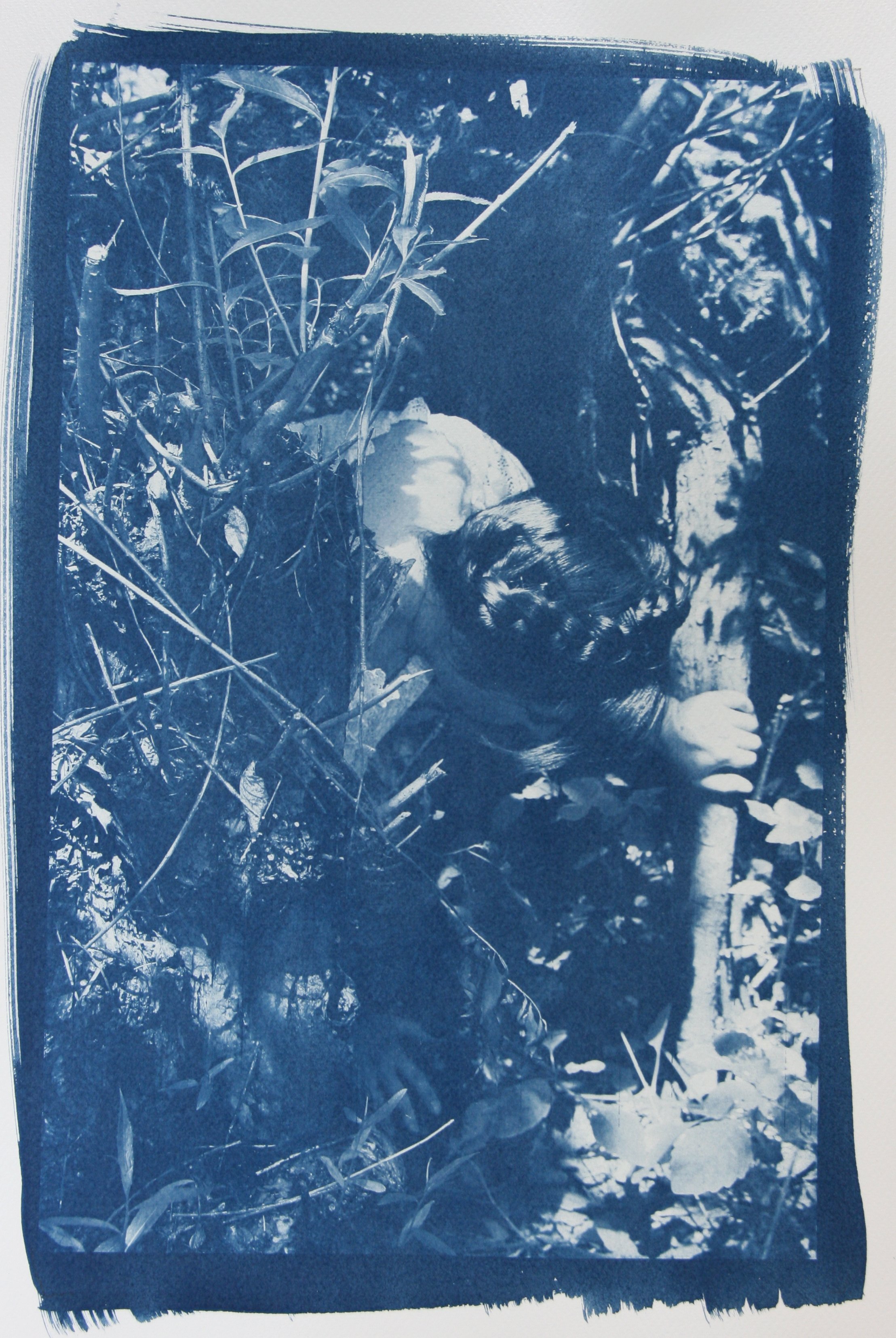WE GAVE YEAR Opened at CIVAL collective during Gallery Night Milwaukee, January 19 2024.
WE GAVE YEAR is a yearlong project I began last January (2023-2024) when thinking about ancestral healing, and how can we feel at home while struggling with being born on stolen land, severed from land based ways of being through colonization and white supremacy, disconnected from the old ways and old world.
One arm of this project was making a personal commitment for one year to stepping into a role as educator; teaching small groups of interested individuals about the folk ways of old europe, how our regional cultures have been lost to whiteness and how we can weave this creative and conscious way of being into our lives where we live now (see:). The other arm of this project was this series of paintings, drawings, experimental photographs, and sculpted objects; each season showing up to my studio and devoting myself to telling these stories using a visual language.
In the introduction to the book “The Nordic Animist Year” by historian Rune Hjarnø Rasmussen, he writes of an Iron Age runestone in southern Sweden which is inscribed with the words “Hathuwolafuz Gave Year”. To ‘give year’ was a beautiful way of describing this person’s deep connection to the world around them, and the active responsibility they felt toward the land over the course of a year. For animists, a year is more than the passing of time. A year of seasonal change is foundational to life, and we all come from cultures that honored place, cycles of life and death, and gratitude for the part we play in it. People as a part of nature (not separate from it) has been somewhat lost in modernity, and many of us have been severed from the practice of seasonal rituals which in essence give back to the earth. During this time of climate crisis, of capitalist greed and white supremacy, I have channeled this grief into an ongoing series in mixed media that explore ancestral practices of place and how that can teach us ways to bridge the gap, reduce harm, and heal.
BONFIRE NIGHT
acrylic on canvas,30x40” 2023.
MARZANNA
acrylic on canvas, 30x40” 2023.
LUSSI PROCESSION
acrylic on canvas, 30x40”, 2023.
VERDANT DAYS
acrylic on canvas, 30x40”, 2023.
VERDANT DAYS installation view.
USEFUL CORN DOLLY #1 (Samhain)
broomcorn, leather, foraged branch, wood stain, glue, string. 2023. Sold.
USEFUL CORN DOLLY #2
broomcorn, foraged branch, string, glue. 2023. SOLD
USEFUL CORN DOLLY #3
broomcorn, foraged branch, string, glue, paint. 2023.
AVANTO 1
Cyanotype tinted with herbs, Fabriano paper, exposed on Lammas at high noon. 5x7”, 2023. SOLD.
AVANTO II
Cyanotype tinted with herbs, Fabriano paper, exposed on Lammas at high noon. 5x7”, 2023. SOLD
PROTECTION #1
Beeswax, ash and honey locust wood, Hawthorne branch. Life sized. 2023.
PROTECTION #2 (Sacred No)
beeswax, clay, vintage red table runner. Life sized, eyes variable. 2023.
ARTIST’S NOTES:
Brooms / Useful Corn Dollies:
Corn dollies were used across Europe and beyond to venerate the grain that sustains us all year long. Frequently, the first or last sheaf of grain cut in the field is shaped into a figure (or even baked into a loaf, or brewed into beer, etc!) and then kept inside all winter, fed offerings and tended to as a member of the community. As a broom maker, this interests me in terms of broom corn as a sacred grain and I thought it would be interesting to make a broom peice that would be used at certain times of the year or could be kept as a reminder of the season.
see also: MARZANNA (a type of corn dollie!)
Paintings:
BONFIRE NIGHT I remember my first bonfire experience (when I was a child) like it was yesterday. How full of magic and delight it was. Fire features prominently in my work, it’s one of my favorite things to paint, probably because I base many of my paintings on meaningful experiences and so much of them occur after dark, around the fire, which tends to open people up and create a depth. I painted this for Guy Fawkes day, based on a photo I found from an English newspaper after reading about guy fawkes in the Christmas Chronicles by Nigel Slater. It’s thought that guy fawkes took on so powerfully in England because of the pre Christian bonfire rituals that signaled the end of the harvest and the beginning of the winter season- a gateway, like Samhain to the celts.
A common way to build a ritual fire is by needfire- a common practice in some northern areas of Europe was to extinguish all the fires in the village, and then come together to build a new one by primitive means (which is how we are gifted fire from the gods). Then the fire would be carried back to each home from the same source, so that everyone tended the same fire, like an ancestor. Fire is meant to be enjoyed by community; if your candle goes out, I light yours by my own. We take care of one another through the cold.
MARZANNA A very old slavic practice on the spring equinox is to drown the goddess of winter so that spring can come again- in the form of a corn dolly, which was constructed for this purpose. This is a practice that is still done today among school children in Poland- I have friends from Poland who remember doing this in their class! She should be brought to a body of water and thrown in, and without looking back, she should float out to sea. Corn Dollies (sheafs of grain formed into human shapes and cared for all winter) is found with regional variations throughout europe.
I perform this practice myself to welcome the spring equinox by gathering the dead vegetation in my garden, making a little doll, and walking her to the locust street bridge for a ride down the river- sometimes to the confusion and delight of the fishermen below!
VERDANT DAYS This was the first piece I began in January 2023, and the last piece I finished in January 2024. It sat all year unfinished in my treatment room at my healing studio, overseeing the work I do every day. I made it during the darkest, coldest weeks of winter- whilst dreaming of the long summer days with my hands brown from dirt; planting seeds, harvesting food from my garden, tending native plants, hunting mushrooms, wildcrafting herbs, making medicines. The plants were what called me home to my ancestors first. I find kinship in them. This piece is displayed alongside my collection of dried plants to evoke the feeling of verdant abundance so rich at the solstice time.
LUSSI PROCESSION The christianized legend of Sankta Lucia goes something like this:
Born to wealthy Sicilian parents, Lucia was an early convert to christianity, a radical move at the time. Her parents betrothed to a pagan suiter, but Lucy refused, wanting instead to give her dowry to the poor and commit her virginity to god. When the time came to marry, she ripped out her own eyes in order to become less pleasant to anyone who would want to marry her. In other stories, the government demanded her burn a sacrifice to the pagan gods and upon refusal, she was sent to be defiled in a brothel. When they came to take her away, she could not be moved, nor burned. She was tortured and her eyes ripped out, and still lived, until pierced in the neck with a sword. Miraculously, upon discovery of her dead body, her eyes were restored and she became saintified. Saint Lucy - her feast day Dec 13- is petitioned for physical healing as well as the center of many rituals to banish the evil eye. Lucy/Lucia is the patron saint of the blind, printmakers, and radical giver of mutual aid. She could not be moved from her strong beliefs, no matter how hard they tried. She stood in her truth until her last dying breath. Saint Lucy / Lucia /Lussi is often depicted with a candle crown, especially in Sweden where her procession lives today. It is thought that her story took on so strongly in Sweden because of the mumming and guising traditions at wintertide that already existed, as well as the stories and lore surrounding the Lussi hag, a kind of winter time witch that rides with the Wild Hunt across the winter tide skies.
I am fascinated with the story of Lucia. Who was she really? We know she existed because her bones remain in Sicily where they are occasionally paraded in the streets for her feast day. Since we truly have no idea of her true story, what can we learn from her lore? And I am really interested in the fact that this mumming procession exists as a literal church service every single year in the Swedish Christian canon. The old ways meeting newer ways meeting even newer ways still.
See also: SACRED NO (beeswax sculpture).
Cyanotypes:
I chose to use cyanotype for these midsummer images because it was originally used to record botanicals in the field at the height of summer- I find cyanotypes interesting because, just like plants require sunlight for photosynthesis, cyanotypes require UV rays to develope iron salt solution into photograph- plus the fact that they don’t require any difficult equipment to make, which earned them a small corner in folk art history. Through sun and water I am holding this sacred moment in time at the height of its power by exposing the image on particular holy days of the year. Saint John’s Day (Midsommar) is the most important holiday to my Swedish ancestors- a day that is rich in magic and lore. It’s thought that any plants or water collected today are multiplied in their healing powers, and that spirits walk the earth.
AVANTO I, II We were swimming up north in Lake Superior this summer when I captured this photograph of my partner swimming in the water between scorching hot sauna sessions. We beat ourselves with birch branches cut fresh on sight, and the water was so cold I had to lower myself in slowly otherwise it took my breath away. It made me remember the coldest winter days of swimming in Lake Michigan, when the air is colder than the water, and it feels almost like a relief. Sauna is a sacred personal practice for me and I wanted to create images that evoke the spirit of the sauna.
FALSE FACE I am especially interested in the mumming and guising traditions of old europe as a way to connect with that which frightens us, or to try on different skins, like an animal perhaps; to feel closer to nature and the great mystery that surrounds us. Here, I collected plants from my garden and daily walks and constructed a paper mache mask for my model to try on. The resulting image recalls tales of The Green Man, and other northern european characters of lore.
HAND OF GLORY The 1722 Petit Albert describes in detail how to make a Hand of Glory, as cited from him by Émile-Jules Grillot de Givry:
”Take the right or left hand of a felon who is hanging from a gibbet beside a highway; wrap it in part of a funeral pall and so wrapped squeeze it well. Then put it into an earthenware vessel with zimat, nitre, salt and long peppers, the whole well powdered. Leave it in this vessel for a fortnight, then take it out and expose it to full sunlight during the dog-days until it becomes quite dry. If the sun is not strong enough put it in an oven with fern and vervain. Next make a kind of candle from the fat of a gibbeted felon, virgin wax, sesame, and ponie, and use the Hand of Glory as a candlestick to hold this candle when lighted, and then those in every place into which you go with this baneful instrument shall remain motionless.”
While composing photographs for this project, I wanted to include an image that involved candle work or scrying in some kind of way- being a potent time of year for divination work of any kind. When I was younger I was fascinated with the lore around the hand of glory, and I wondered if I could recreate the image of one using a living hand- and, as the passage writes, “expose it to full sunlight during thedog-days “. It was one of the most playful pieces I created, totally indulgent to my inner child.
MAY QUEEN “The May Queen is also known as The Maiden, the goddess of spring, flower bride, queen of the faeries, and the lady of the flowers. The May Queen is a symbol of the stillness of nature around which everything revolves. She stands for purity, strength and the potential for growth, as the plants grow in May. She is one of many personifications of the energy of the earth.” (Wiki)
The Goddess archetype is found all throughout the wheel of the year and is a broadly European idea; but I personally feel that the lady of the flowers is when she is at her most powerful, the peak of the year. This was a personal one for me, as I spent the summer also preparing for my best friend’s wedding. I decided I wanted a May Queen, and who better than her- on the precipice of a new chapter in her life- a transformation, a powerful ritual. Surrounded by flowers, carrying flowers, flowers on her veil.
PORTAL In Trolldom, the folk magic of the nordic people (of which I am a student) it is believed that any strange tree is full of healing power. There is an old remedy that involves passing sick children through trees to heal them of their issues; and when I moved to Milwaukee, walking in my neighborhood, I found such a tree for myself- my troll tree has a hole large enough for me to pass through and I do so when I need to. I brought my model here to the tree just before the summer solstice and asked her to pass through.
Sculptures:
Beeswax itself is considered itself to be a holy substance- used cross culturally in religious ceremony from ancient Egypt to Greece, to the Catholic Church and Hindu ceremony, and beyond- generally as a symbol of purity, fertility, and protection. indeed we use it often in herbal applications as a skin protective in recipes for balms and salves. It is one of my favorite substances to work with- fragrant, local, easily moldable and reminiscent of skin once cooled.
PROTECTION 1- I wanted to create a series of evil eye hand gestures paired with herbs and magical plants associated with warding, protection, and boundaries- to live as a beautiful art object AND as a protective talisman, to be placed in the home or use on the altar. This is the first of many.
This first sculpture features the “fig” evil eye gesture, which goes all the way back to Ancient Rome, and spread across europe from there. this gesture is reminiscent of a vulva and depending on the region can be considered a powerful ward or an offensive gesture. The ancient greeks wore amulets of this gesture around the neck, as overtly sexual gestures were expected to distract evil spirits from causing you harm. There’s also a very old practice I find very funny of raising the skirt without underwear on to ward away evil or cleanse an area. Like womens work, this is simple yet powerful. Paired here with a hawthorn branch- a plant I have been cultivating a relationship with for the last few springs. Widely regarded across lore as a plant to look at but not touch, as it belongs to the fae and houses the ancestors- a portal to the underworld- to pick it’s berries you must first ask permission, and then continue to tread lightly as it is easy to draw blood. In Celtic regions they were planted next to holy springs so that people knew where to find water, and to worship. I hope this image envokes a a feminine feirocity, a beauty with edges, a mother’s grace with teeth.
PROTECTION 2 (SACRED NO) The christianized legend of Sankta Lucia goes something like this:
Born to wealthy Sicilian parents, Lucia was an early convert to christianity, a radical move at the time. Her parents betrothed to a pagan suiter, but Lucy refused, wanting instead to give her dowry to the poor and commit her virginity to god. When the time came to marry, she ripped out her own eyes in order to become less pleasant to anyone who would want to marry her. In other stories, the government demanded her burn a sacrifice to the pagan gods and upon refusal, she was sent to be defiled in a brothel. When they came to take her away, she could not be moved, nor burned. She was tortured and her eyes ripped out, and still lived, until pierced in the neck with a sword. Miraculously, upon discovery of her dead body, her eyes were restored and she became saintified. Saint Lucy - her feast day Dec 13- is petitioned for physical healing as well as the center of many rituals to banish the evil eye.
Saint Lucy / Lucia /Lussi is often depicted with a candle crown, especially in Sweden where her procession lives today. It is thought that her story took on so strongly in Sweden because of the mumming and guising traditions at wintertide that already existed, as well as the stories and lore surrounding the Lussi hag, a kind of winter time witch that rides with the Wild Hunt across the winter tide skies.
In images of Lucia, she is often depicted with her torn out eyes in the palms of her hands (with her actual eyes back in her head at the same time). I am playing with this tradition of art work, thinking about the violation of women and how many times we have to say our no’s, over and over and over until my cup runneth over.
I am fascinated with the story of Lucia. Who was she really? We know she existed because her bones remain in Sicily where they are occasionally paraded in the streets for her feast day. Since we truly have no idea of her true story, what can we learn from her lore?
Lucy/Lucia is the patron saint of the blind, printmakers, and radical giver of mutual aid. She could not be moved from her strong beliefs, no matter how hard they tried. She stood in her truth until her last dying breath. When I need to see in the dark, Lucy is there. When I am wavering in my truth, Lucy is there. And when I am defiant in this age of toxic independence, corporate greed, and community apathy- Lussi drives me to flip tables and shout loudly. Shout my Sacred No.

















